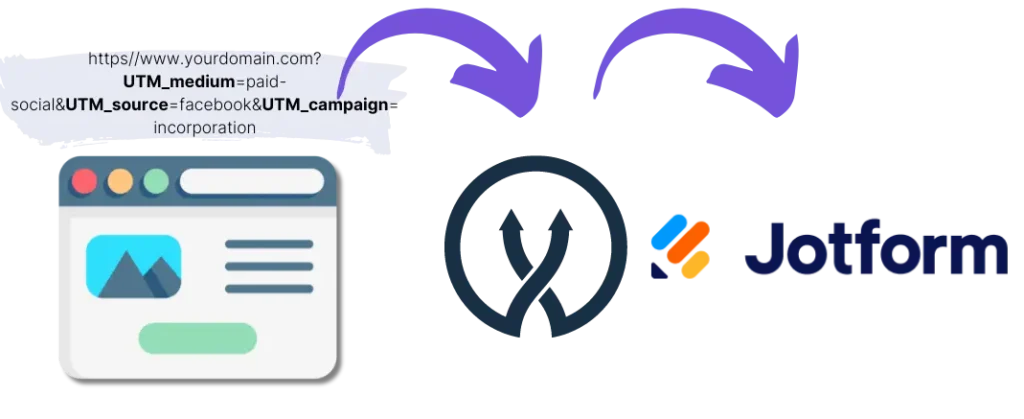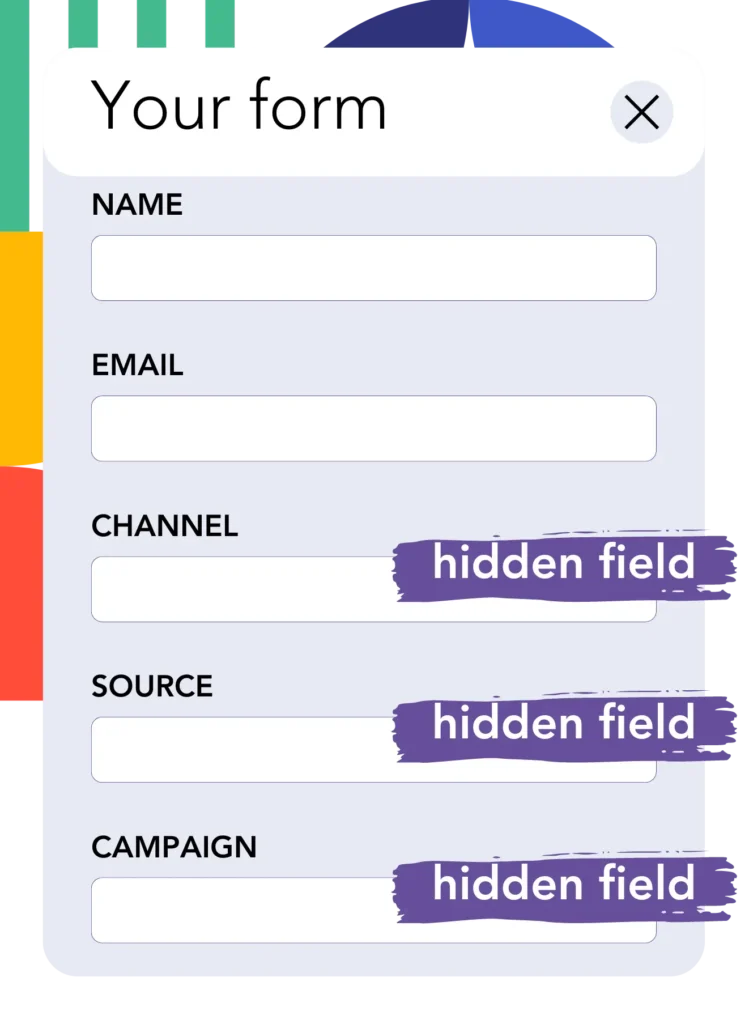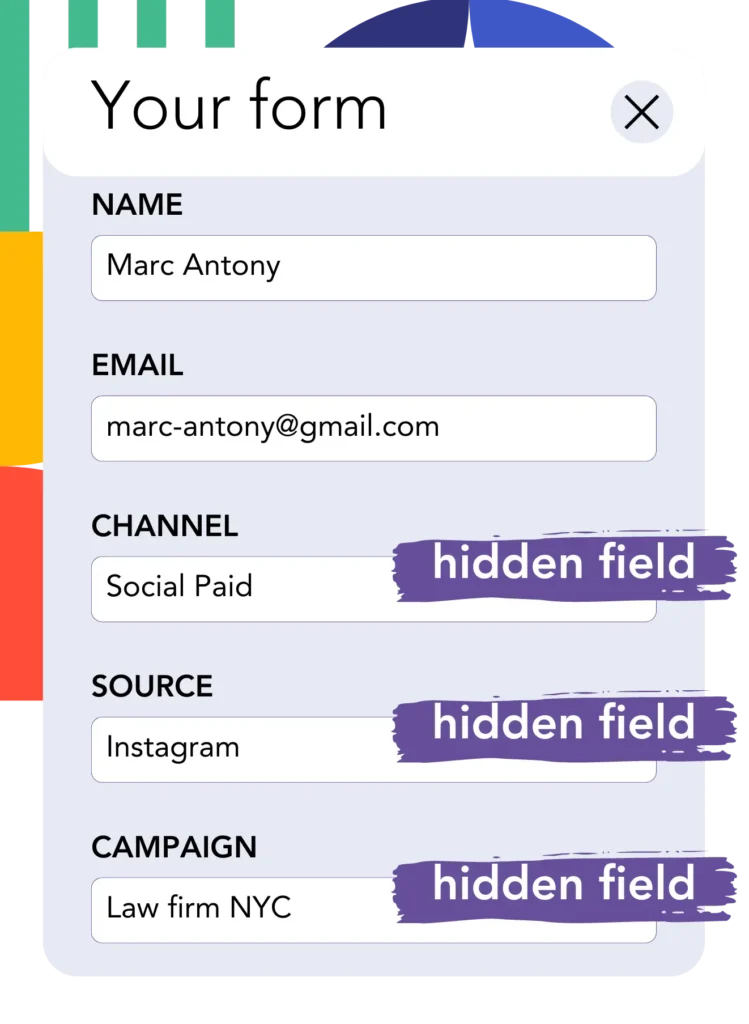Adding UTM tracking to Jotform can be difficult, especially for those without coding skills.
Imagine a way to easily capture UTM parameters in Jotform, without any coding needed.
Get to know Leadsources.io!
Leadsources is a tool that tracks lead sources, acting as an intermediary between your UTM parameters and Jotform.

When a visitor clicks on your marketing campaign, Leadsources captures the UTM parameters from your URL.
Leadsources then automatically inserts these UTM parameters into the hidden fields of your Jotform.
You can then view your UTM parameters alongside the lead’s information on the Jotform submission page.
Learn how to implement UTM tracking in Jotform with Leadsources in just 10 minutes through this easy-to-follow guide, no coding needed.
Implement Jotform UTM tracking in 4 simple steps
Step 1: Add Leadsources to your website’s head tag

Sign up for Leadsources.io and enjoy a 14-day free trial.
Insert the Leadsources code into the head tag of your website. No coding or developers are needed.
Just follow this step-by-step guide.
Step 2: Add UTM parameters to your campaigns

Include the UTM parameters you want to track in all your campaigns (PPC, email, social media, etc.).
Leadsources supports these UTM parameters:
- UTM_source
- UTM_campaign
- UTM_term
- UTM_content
Leadsources also captures other information not included in UTM parameters, such as the channel, landing page, and landing page subfolder.
Step 3: Add hidden fields to your Jotform

When visitors fill out your Jotform, they provide personal data in the visible fields (name, email, etc.).
At the same time, Leadsources.io automatically inserts UTM parameters into the hidden fields of your Jotform (channel, source, etc.).
To do this, add the hidden fields to your Jotform by following this guide.
Step 4: Track the UTM parameters in Jotform

When someone clicks on your campaign and visits your website, Leadsources captures the UTM parameters from your URL.
The visitor then opens your Jotform and starts filling it out.
Leadsources inserts the UTM parameters into the hidden fields of your Jotform. These fields are invisible to the visitor.
When the form is submitted, both the UTM parameters and the form responses are submitted together.
How does Leadsources work?
By adding the Leadsources code to the head tag of your website, Leadsources reads and captures the UTM parameters from your URL whenever someone visits your site.
It then stores these UTM parameters in the hidden fields of your Jotform.
If a visitor arrives at your site without clicking a link with UTM parameters, Leadsources still captures data about the visitor using the referrer, such as:
- Channel
- Source
- Campaign
- Landing page
- Landing page subfolder
By implementing this method, you can monitor key lead source metrics without needing UTM tags, such as:
- On Google Search
- On your Instagram bio link
- On your social media posts
While most tools can only track lead sources using UTM parameters, Leadsources allows you to track leads regardless of their source, UTM parameters or not, including:
- Organic Search
- Paid Search
- Organic Social
- Paid Social
- Referral
- Affiliate
- Display Advertising
- Direct Traffic
This enables you to collect clean lead source data in one place.
Pro tip:
LeadSources integrates with all the popular online form builders, including Cognito Forms, Gravity Forms, Typeform, WPForms, and more. Check how to track the UTM parameters in any form builder.
How to run performance reports
With your lead source data captured in the hidden fields of your Jotform, you can run performance reports such as:
- Leads per channel
- Revenue per channel
- Revenue per keyword
This helps you make informed decisions on your marketing spending.
Let’s break down the types of reports available for you to run.
Lead performance reports
You can create reports showing the volume of leads generated by:
- Channel
- Source
- Campaign
- Landing page
- Landing page subfolder
Example #1
You run campaigns on different channels (SEO, PPC, email, etc.). You can export the collected data and create a “Leads by channel” report.

Example #2
Once you identify the channel that generates the most leads (e.g., Google Ads), you can break it down to see the number of leads produced by each ad campaign.

Example #3
Once you determine which campaign is the most effective at generating leads, you can take a closer look by isolating this campaign and reviewing the keywords that are driving those leads.

Sales performance report
You’ve identified which ads and keywords bring in the most leads, but do you know if these leads are translating into revenue?
Use a CRM to import your Jotform submissions and generate reports that link leads to sales.
For example:
| Channels | Search Paid | Social Paid |
| Leads | 50 | 75 |
| Sales | 5 | 6 |
| Average order value | $150 | $100 |
| Revenue | $750 | $600 |
You ran ads on Google and Facebook and your initial report showed that Social Paid ads brought in more leads compared to Search Paid ads.
Yet, after a few weeks of reviewing which leads turned into customers, you found that Search Paid ads resulted in higher revenue per lead. Consequently, you decide to increase the budget for Search Paid ads.
LeadSources tracks the source of each lead in Jotform, whether they come from ads, organic search, social, email, etc. and syncs that data with each submission. See the full breakdown on the lead source in Jotform page.
